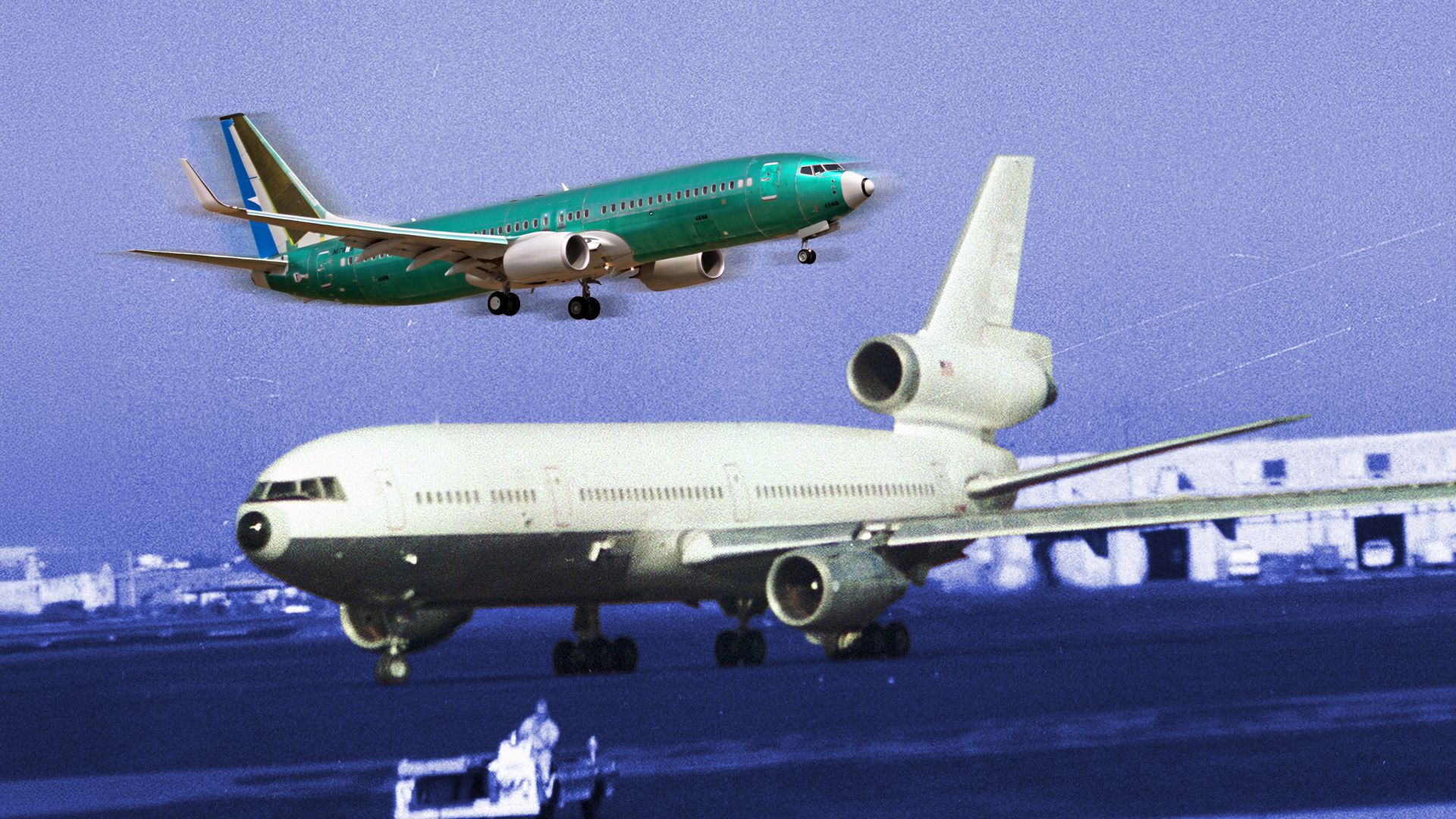World
Boeing’s Merger with McDonnell Douglas: A Strategic Move Explained

Boeing merged with McDonnell Douglas in 1997 as part of a strategic effort to bolster its military aircraft division and mitigate financial risks associated with the commercial aviation sector. The merger was aimed at consolidating resources and expertise, allowing Boeing to navigate the fluctuating market more effectively. While the integration was intended to enhance Boeing’s capabilities, it has also been linked to several challenges that the company faces today.
Boeing has held the title of the largest manufacturer of commercial aircraft in the United States since the post-World War II era. The introduction of the Boeing 707 in the 1950s marked a significant shift, bringing jet-powered air travel into the mainstream and ushering in the Jet Age. The company surged ahead of its rival, Douglas Aircraft Company, which had previously dominated the market with models like the DC-3. Despite Boeing’s ascent, Douglas remained a formidable competitor, launching successful aircraft such as the DC-8 and DC-9 during the 1960s.
In 1967, facing financial pressures, Douglas merged with McDonnell Aircraft, forming McDonnell Douglas. The new entity produced notable aircraft, including the DC-10 and MD series, although it struggled to maintain profitability in the commercial sector. Boeing’s decision to acquire McDonnell Douglas was influenced by the latter’s successful military division, which included iconic aircraft like the F-15 Eagle and F/A-18 Hornet.
Strategic Reasons Behind the Merger
By the time of the merger, McDonnell Douglas’s commercial operations were faltering, prompting Boeing to focus more on its military sector. The military division of McDonnell Douglas was thriving, producing aircraft that were crucial for the United States armed forces. Boeing quickly discontinued underperforming commercial lines such as the MD-11 and MD-90, while rebranding the MD-95 as the Boeing 717-200. Unfortunately, the 717 also struggled to capture market interest, leading to its production halt in 2006.
The merger allowed Boeing to incorporate important military technologies and maintain a competitive edge, especially in defense contracts. The C-17 Globemaster III, which Boeing continued to produce until 2015, exemplifies this advantage. The integration of McDonnell Douglas’s military capabilities helped Boeing solidify its position as a leading defense contractor, even as its commercial aircraft division faced mounting difficulties.
Despite these advantages, Boeing encountered significant challenges following the merger. The company had long been regarded as a reliable manufacturer, particularly after the successful launch of the Boeing 777 in 1995 and the 737 Next Generation in 1997. However, the development of the 787 Dreamliner faced numerous setbacks. Initially unveiled to great anticipation, the aircraft was delayed and marred by quality control issues, largely due to the decision to outsource critical components to various suppliers around the world.
The Impact of Management Changes
In the wake of the merger, management shifts significantly influenced Boeing’s trajectory. After Phil Condit resigned in 2003, former McDonnell Douglas CEO Harry Stonecipher took charge and initiated significant changes in the company’s supply chain strategy for the 787. This decision to outsource more production components, while financially attractive, created logistical challenges that led to increased costs and quality issues.
Boeing’s subsequent leadership under James McNerney further emphasized a focus on short-term profitability, which shaped the development of the 737 MAX. The decision to re-engineer an existing aircraft model, rather than create a new one, came with its own pitfalls. Reports indicated that the development of the MAX was rushed, leading to the inclusion of the MCAS software system, which ultimately contributed to two fatal accidents.
The fallout from these events has had lasting implications on Boeing’s reputation. The company has faced scrutiny over its quality control practices, particularly at its South Carolina plant, where production of the 787 and 737 MAX takes place. Issues such as the need for increased oversight and the decision to outsource have been highlighted as contributing factors to the ongoing challenges faced by Boeing.
As Boeing continues to navigate the complex landscape of commercial and military aviation, the legacy of the McDonnell Douglas merger remains a critical point of reflection. Many industry analysts suggest that the integration may have prioritized short-term financial gains over long-term stability, and the repercussions of that decision are still being felt today. Boeing is working to restore its standing in the aerospace industry, grappling with the consequences of past management decisions while facing a rapidly changing market.
-

 Sports2 weeks ago
Sports2 weeks agoSteve Kerr Supports Jonathan Kuminga After Ejection in Preseason Game
-

 Politics2 weeks ago
Politics2 weeks agoDallin H. Oaks Assumes Leadership of Latter-day Saints Church
-

 Business2 weeks ago
Business2 weeks agoTyler Technologies Set to Reveal Q3 2025 Earnings on October 22
-

 Lifestyle2 weeks ago
Lifestyle2 weeks agoDua Lipa Celebrates Passing GCSE Spanish During World Tour
-

 Entertainment2 weeks ago
Entertainment2 weeks agoZoe Saldana Advocates for James Cameron’s Avatar Documentary
-

 Science2 weeks ago
Science2 weeks agoChicago’s Viral ‘Rat Hole’ Likely Created by Squirrel, Study Reveals
-

 Lifestyle2 weeks ago
Lifestyle2 weeks agoKelsea Ballerini Launches ‘Burn the Baggage’ Candle with Ranger Station
-

 Health2 weeks ago
Health2 weeks agoRichard Feldman Urges Ban on Menthol in Cigarettes and Vapes
-

 Health2 weeks ago
Health2 weeks agoCommunity Unites for Seventh Annual Mental Health Awareness Walk
-

 World2 weeks ago
World2 weeks agoD’Angelo, Iconic R&B Singer, Dies at 51 After Cancer Battle
-

 Business2 weeks ago
Business2 weeks agoMLB Qualifying Offer Jumps to $22.02 Million for 2024
-

 Sports2 weeks ago
Sports2 weeks agoPatriots Dominate Picks as Raiders Fall in Season Opener







